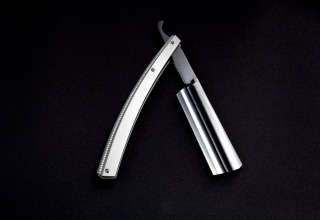Most people remember Training Day as either that movie Denzel Washington won an Oscar for but didn’t quite deserve or that movie where if you’re quick on a pause button you can see Eva Mendez butt naked. Denzel’s deservedness and Eva’s booty aside, director Antoine Fuqua and writer David Ayer’s tale of corruption was still one incredibly gritty and visceral cop drama.
Now with End of Watch, Ayer’s in the director’s chair as well and is looking to make an even grittier and more visceral film, and judging from this new Behind the Scenes featurette, he succeeded.
ComingSoon.net also sat down with Ayer who spoke about the different approach he took to making this movie, like having stars Jake Gyllenhall and Michael Pena better portray on-screen partners by having them become off screen friends first.
“It’s unheard of. It’s really unheard of. I mean, when I got them together initially, they’re professional actors. They’re both talented, professional individuals, and that’s how they’re coming at the job, you know? It’s like, okay, we’re actors. We got the job. We’re going to do this. And I’m like, “No, no, no, no, guys. You gotta be real friends. I need you guys to develop a friendship.” It wasn’t just this sort of run, jump, fight, shoot gun martial arts fight training piece, it was also spend time together. Go and have a beer. Hang out. Get to know each other. Learn each other’s personal histories. Tell each other some secrets. It was through that process and through the training and being forced to work together and become a team. One of the toughest things any cop can do or any soldier can do is shoot, move and communicate simultaneously. It was through that process of learning how to shoot, move and talk that something happened, and I think it was just a trust factor that transcended the immediacy of the job and the work. It was like a switch went off and they were like, thick as thieves after that. I mean, it was really amazing to watch, you know, a real friendship grow before my eyes. It carries onto this day. “
The film has a very unique look that’s not quite found footage but not conventional cinematography either, as a lot of the footage was actually shot by Gyllenhall and Pena themselves using handheld cameras. Ayer mentioned how this “look” came to be and how it actually provided the inspiration for the film:
“Friends suggested I do the cop thing again and write the ultimate cop movie and do like found footage, which seemed insane. Then, a friend of mine who’s a cop who brought cameras to work and videoed a lot of sh*t at work showed me some of these videos and they’re mind blowing, you know, a spectrum from hilarious to horrific. There’s something so immediate and so real about it because I’ve never seen footage shot by the cops themselves at work. It’s always somebody else shooting the cops.
I realized that that was a terrific tool to tell a story with, so it’s like, okay, if I’m doing that, now I need to create this dialogue, this script, this world that’s seamlessly realistic. So now these characters need to talk like real people. They can’t talk like movie characters. It can’t be movie dialogue. I probably can’t structure it like a normal movie with the guys finding clues, solving crimes and arresting the uber-villain and saving the world. That’s not policing, you know? I decided to make the movie a study in friendship. It’s really about two best friends who happen to wear badges. Then, it became about working with Jake and Mike, folding them into my vision. Eventually on set, handing them cameras and letting them start to express the world through their eyes as they saw it. I mean, it’s a strange process, but what evolved is, I feel, incredibly unique, you know? I didn’t want to get sucked into the whole found footage gimmick thing. I mean, I think there’s a lot of negativity around that.”
Ayer also spoke about whether those unconventional film techniques influenced his script as well:
“Oh no, it changes everything because… well, everything they say is scripted. There’s a couple of scenes where it’s a little bit of ad-libbing, but everything’s scripted. All the action is scripted. Everything’s scripted. It feels crazy naturalistic, but at the end of the day, it follows the blueprint. It follows the screenplay, but in writing that script, I had to create this illusion of spontaneity and this illusion of reality unfolding before our very eyes. To that end, I wrote the dialogue as people talk, not movie dialogue. I structured the scenes so that they don’t have normal beginning, middle, end kind of shapes to them and a little bit more sort of loose and meandering structure. It’s also more episodic, because if you look at things that people have shot and put together, all those three factors, the normal speech, unstructured scenes and the episodic nature all contribute to this illusion of reality.”
To find out more about the training the actors went through, Ayer’s relationship with the police as well, what it’s like working with Arnold Schwarzenegger on Breacher and a couple of other nuggets of info, then check out the full interview. You know, after you stop doing that Google image search for “Eva Mendez Training Day”.
PS: No, your eyes did not deceive you. That is indeed America Ferrera aka Ugly Betty.
Last Updated: September 18, 2012





















